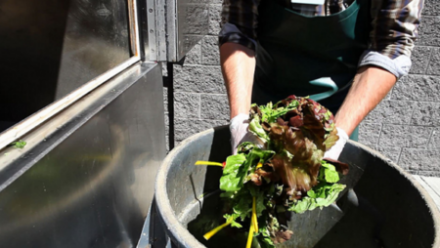
By David Green, U.S. Sustainability Alliance, November 3, 2018
In the November issue of European Supermarket Magazine (ESM), USSA’s David Green tackled the issue of food waste. At a time when current waste initiatives and discussions focus on retail and consumers, he showed what the front end of the supply chain is doing to reduce waste and highlighted the importance of involving the entire supply chain in waste reduction. We’re sharing some excerpts from the article just for our readers.

If food waste were a country it would be the third biggest emitter of greenhouse gases after China and the United States, while food produced on nearly one-third of the world’s farmland goes uneaten.
As one of the largest food producers in the world, the United States takes tackling food loss and waste seriously. Initiatives are already in place to address the issue at the consumer-level. After all, more than half of all food waste in most developed countries takes place in the home.[1]
Less discussed, but no less important, progress is also being made in the U.S. to cut food waste at the production level.
REDUCE, REUSE
US farmers are striving to reduce and, where possible, eliminate waste from their production processes. For example, The Almond Board of California reuses the hulls, shells and even the trees where the nuts are grown.
The Alaska seafood industry is equally committed to minimizing waste. After the primary processing of their harvests, Alaska Seafood producers make full use of all the leftover materials – such as for pet food, fertilizer and for fish oil, which can even be used to power the fish processing plants.
Technology plays a part. Precision technologies enable farmers to apply just the right amount of water and nutrients their crops need. Meanwhil,e GM technology is helping farmers address what is, paradoxically, one of the biggest areas of food waste: fresh fruit and vegetables. GM potatoes are less prone to bruising and black spots, while GM apples are non-browning, meaning they are less likely to be thrown away.
RECYCLE
Even animal waste has a use, with anaerobic digesters turning animal manure into energy.
For example, in Gooding, Idaho, Big Sky West Dairy Farm has used a digester since 2009 which converts manure from its 4,700 dairy cows, and a small amount of other organic wastes, into biogas. This powers two 710 kilowatt engines, which in turn produce electricity that is sold to the local utility.
This helps to reduce farm waste management costs and methane emissions into the atmosphere.
RENDER
The rendering industry is one of the oldest recycling industries around. In the United States the North American Renderers Association (NARA) was set up in 1933 and today its members collect 56 billion pounds of raw materials a year, helping to divert animal by-products (bones, fats, feathers and scraps not suitable for human consumption) from landfill and turn them into oils, fats and proteins.
COLLABORATE
When it comes to waste, collaboration is key – particularly when you consider the huge challenge facing the food industry today: to feed a growing world population. Increasing production is not enough to achieve food security. We also need to save, preserve and recycle the food we already have. And that requires awareness, education and action right across the supply chain.
[1] https://www.lovefoodhatewaste.com/why-save-food and https://www.nrdc.org/sites/default/files/wasted-food-IP.pdf
Header photo courtesy of Flickr user: Katie Campbell


